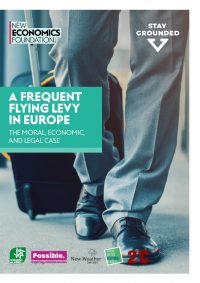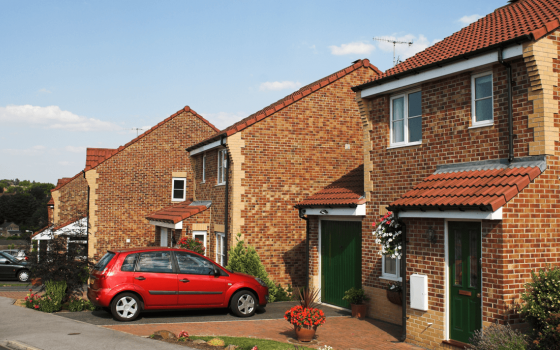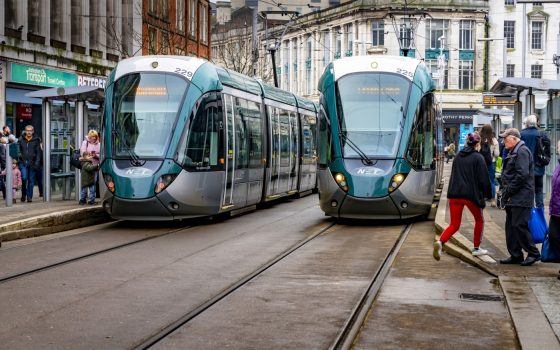A frequent flying levy in Europe
The moral, economic and legal case
17 October 2024
Read the report in translation:
European air traffic presents one of the continent’s largest obstacles to halting climate breakdown and achieving the climate goals subscribed to in international and European law. Before the Covid-19 pandemic, the sector’s impact was rising rapidly. All indications suggest this trend is now resuming. Additional climate damage arising from the growth in air traffic has out-stripped modest reductions delivered through technological advancements. A wide range of expert bodies has advised that technological solutions and alternative fuels are limited and a sole reliance on these will not be sufficient to align the sector with internationally agreed climate commitments. EU and national government policy to date has been inadequate compared with the scale of the challenge and does not guarantee emissions reductions on behalf of society.
Stronger policy is needed, but Europe has already begun to experience the backlash which can develop if climate action does not deliver fair and feel fair. If we are to secure a rapid global transition to avoid climate breakdown, European policymakers must have a clear view of two key dimensions of the unfairness of aviation’s climate damage: first, the inequity between those nations responsible for emissions (largely in Europe and North America) versus those experiencing the most acute climate-driven loss and damage (largely in the Global South); and second, the inequity within nations between the minority who fly frequently (typically the wealthiest groups) and the majority who fly rarely or not at all.
Globally, 1% of the world’s population produces 50% of aviation emissions, while approximately 80% have never set foot on a plane. Within western Europe, our analysis shows that the highest-income households (over £/€100,000 per year) are at least six times more likely to take three or more return flights per year than those on the lowest incomes (under £/€20,000 per year). Meanwhile, among the lowest-income group, almost 70% of households do not fly in any given year, compared with just over 20% among the highest-income households.
Current policy sees air traffic exempted from most standard forms of taxation (eg fuel duty and VAT). Not only does this reduce state revenues, it means that the polluter does not pay and leaves the industry with insufficient incentive to cut emissions. Applying a fuel duty on kerosene, or another form of comprehensive carbon tax, on flights must be an urgent priority. In its absence, governments should also explore implementing meaningful distance surcharges on ticket taxes. However, as the price effect of any such measures will create a much larger relative barrier for those on low incomes compared to those on high incomes, we advocate supplementing fuel tax and regulatory measures with a frequent flying levy (FFL). Indeed, we see an FFL as a key tool for ensuring the public perceives climate action as fair and averting a backlash against politicians and the wider green transition.
Under an FFL a ticket tax is applied to each single flight taken by an individual. The tax rate rises incrementally after every two single flights taken (ie after every return flight). It can support the green transition in three key ways:
- Help to significantly cut aviation emissions in the short to medium term, delivering the necessary savings that technological developments cannot. Our tested policy design, if implemented in the example year 2028, is calculated to be able to deliver a 21% drop in European aviation carbon emissions.
- Protect access to flying for infrequent, lower-income passengers while managing overall air traffic levels and making polluters pay. The levy results in no change to the taxes paid by 72% of the population in western Europe. Households earning over £/€100,000 per year are four times more likely to pay the levy than households earning under £/€20,000. Instead, the majority (54%) of savings come from individuals who would otherwise have taken four or more return flights per year, a group representing just 4.5% of the western European population.
- Raise significant funds for use in accelerating Europe’s transition to a fairer, greener economy. These can recompense those nations least responsible for the climate crisis for damages experienced, and support workers and communities with jobs or local businesses directly in, or heavily reliant on, air travel. Our tested policy design raises €63.6bn in additional tax revenues across Europe.
In this report, we evidence the effectiveness of the FFL policy based on analysis grounded in an economic assessment by CE Delft, using the widely recognised AERO MS model, as well as a New Economics Foundation (NEF) analysis of recent polling by More in Common. We also set out a potential roadmap to the implementation of such a policy, demonstrating its feasibility and how legal obstacles might be overcome, grounded in a legal analysis by AdaStone Law. An FFL offers a fair, feasible, fast route to getting emissions for European aviation on track. The levy works best if combined with other policy measures aimed at cutting emissions, including a kerosene/carbon tax on all flights departing European airports.
Topics Climate change Environment Transport







